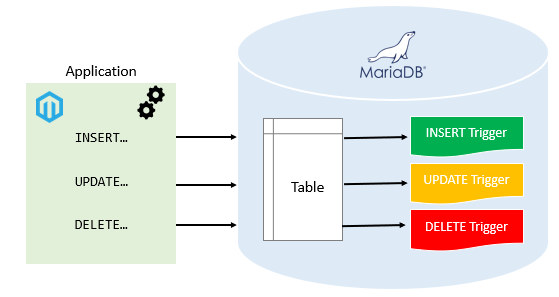MariaDB Check Trigger: A Powerful Tool for Monitoring Database Changes
Are you looking for a way to keep track of changes in your MariaDB database? Look no further than the MariaDB Check Trigger. This powerful tool allows you to monitor your database for any modifications and take action when specific conditions are met.
Triggers are SQL statements that are automatically executed when a specified event occurs in a database. With MariaDB Check Trigger, you can create triggers that check for certain conditions and perform actions based on the results. This can be incredibly useful for monitoring changes to critical data, ensuring data integrity, and automating routine tasks.
In this article, we will explore the basics of using MariaDB Check Trigger, including how to create triggers, set conditions, and define actions. We will also discuss some common use cases for using triggers in your database.
Getting Started with MariaDB Check Trigger
Before you can start using MariaDB Check Trigger, you will need to ensure that your MariaDB server supports triggers. Triggers were introduced in version 5.0, so you will need to be running at least this version of MariaDB to take advantage of this feature.
To check if triggers are supported on your server, you can run the following SQL query:
SHOW TRIGGERS;
If triggers are supported on your server, you can proceed to create your own triggers using the CREATE TRIGGER statement. This statement allows you to define the event that will trigger the execution of the trigger, as well as the conditions that must be met for the trigger to be fired.
Creating Triggers with MariaDB Check Trigger
To create a trigger with MariaDB Check Trigger, you will need to use the CREATE TRIGGER statement followed by the name of your trigger, the event that will trigger the execution of the trigger, and the SQL statements that make up the body of the trigger.
For example, let’s say you want to create a trigger that checks for any updates to a specific table and logs these changes to a separate table. You could use the following SQL statement:
CREATE TRIGGER log_updates
AFTER UPDATE
ON products
FOR EACH ROW
INSERT INTO product_updates (product_id, updated_at)
VALUES (NEW.product_id, NOW());
In this example, the trigger named log_updates will fire after an update operation is performed on the products table. For each row that is updated, the trigger will insert a new record into the product_updates table, capturing the product_id that was updated and the current timestamp.
Common Use Cases for MariaDB Check Trigger
There are countless ways that you can use MariaDB Check Trigger to monitor and automate tasks in your database. Some common use cases include:
- Enforcing data integrity constraints
- Automatically archiving old data
- Notifying users of specific events
- Performing calculations or updates based on changes
By leveraging MariaDB Check Trigger, you can ensure that your database remains accurate, secure, and efficient. Whether you are managing a small business database or a large enterprise system, triggers can be a valuable tool in your arsenal.
In conclusion, MariaDB Check Trigger is a powerful feature that allows you to monitor database changes and take action when specific conditions are met. By creating triggers that respond to certain events, you can automate routine tasks, enforce data integrity, and streamline your database management processes.
